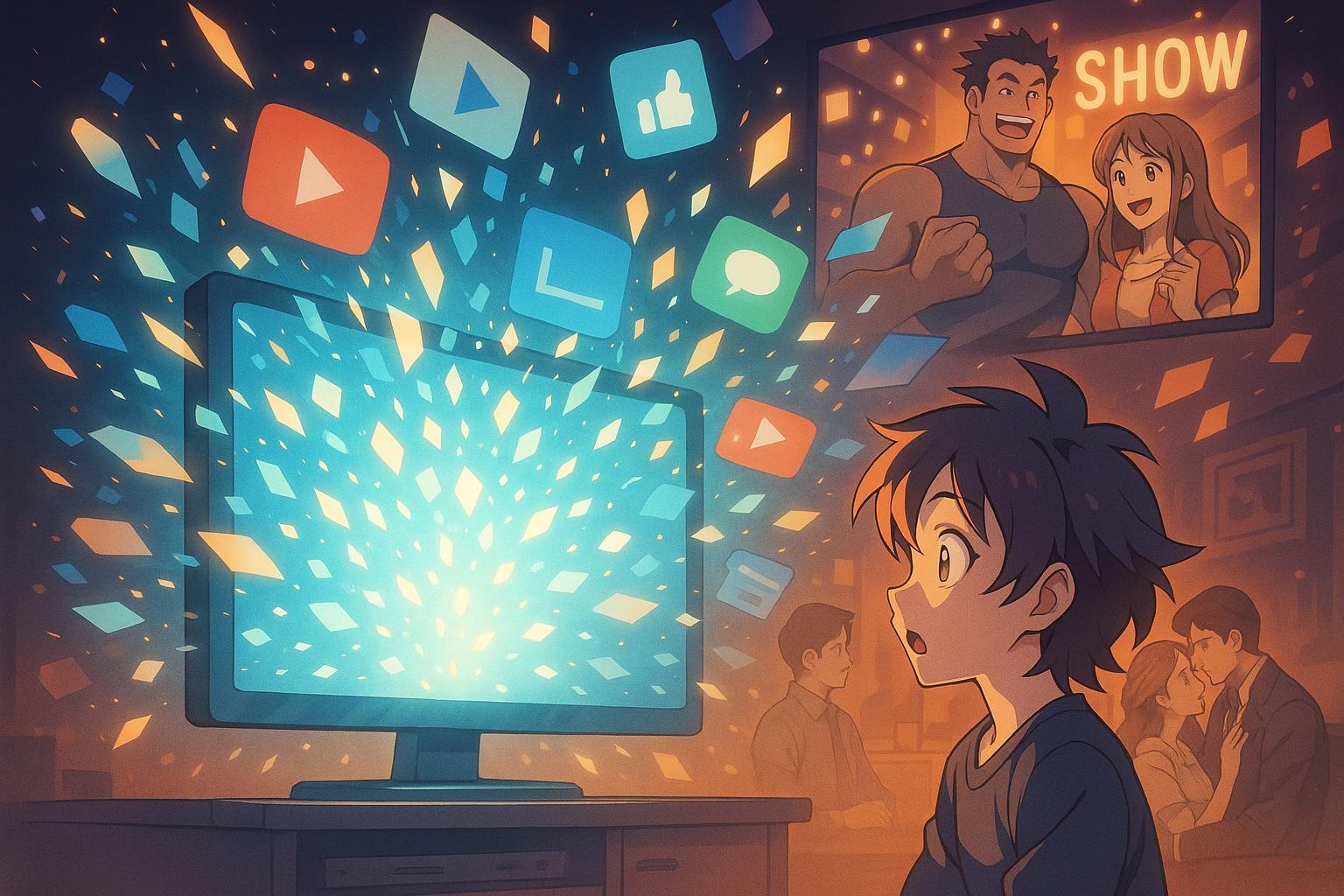To mark a quarter-century into the 21st century, an exploration of television’s rapid evolution reveals a medium permanently altered by the streaming revolution. The narrative weaves through ratings, genres, and viewer behaviour, shedding light on how pop culture has transformed dramatically since 2000.
Once a cornerstone of communal experience, television now inhabits a fragmented landscape where individual viewers curate their viewing schedules. While millions still congregate around the year's most-watched broadcasts—a phenomenon that can be traced back through decades—this trend now largely revolves around significant cultural or newsworthy events rather than traditional scripted programming. According to viewing data from the UK ratings agency Barb, the list of most-watched shows consistently reflects moments of national importance, such as royal events or live sports, rather than scripted dramas that once dominated. Phil Harrison, a TV journalist and author, aptly notes that traditional premieres and scripted series have lost their standing as shared experiences in an era of limitless choices.
In stark contrast to the past, when shows like "Coronation Street" or "EastEnders" routinely topped the ratings, contemporary viewing habits indicate that scripted content can no longer guarantee mass appeal. Phil Harrison stresses that the model of scheduled viewing has given way to on-demand streaming, resulting in a smaller audience for traditional soaps, which now struggle to retain viewership amidst the rising popularity of reality television. While series that celebrate everyday life, such as "The Great British Bake Off," illustrate the genre's current soft-spoken success, they are also indicative of shifting cultural identities. The very title of the show encapsulates a collective yearning for a shared national narrative—one that seems increasingly elusive in today's media ecosystem.
Reality TV, which burgeoned in the early 2000s with programmes like "Big Brother," has irrevocably reshaped audience expectations and the television landscape itself. Despite the absence of "Big Brother" from recent ratings lists, its influence permeates modern television, paving the way for shows that spotlight "ordinary people" and competitive formats. Contest-based series dominate today's cultural conversations and exemplify the allure of reality programming, as evidenced by the soaring viewership numbers for competition-oriented shows like "The Traitors."
However, the popularity of reality television marks a broader decline in traditional soap operas—once rich in storytelling and cultural reflection. Both "EastEnders" and "Coronation Street" report dwindling numbers, particularly among the under-35 demographic, leading industry analysts to consider their potential obsolescence. Harrison suggests that the long-form narratives of soaps simply cannot compete with the bingeable nature of contemporary streaming dramas, which, with expansive story arcs, attract a young audience seeking fresh perspectives reflective of modern life.
As younger viewers increasingly gravitate towards platforms like YouTube, the implications for traditional broadcasters are severe. Ofcom reports a staggering drop in weekly viewership among 16- to 24-year-olds from 76% in 2018 to a mere 48% in 2023. This transformation raises concerns for traditional television networks that heavily rely on advertising revenue and struggle to adapt their content strategies to attract a younger audience. For instance, the success of "Hollyoaks" among this age group, credited to a leaner episode schedule and shorter runtimes, highlights the necessity of innovation in content delivery.
Yet the landscape is not without its bright spots. Scripted comedies still find their way to success, as demonstrated by "Gavin & Stacey." This charming series appeals broadly by offering relatable, heartfelt narratives devoid of cruelty or cynicism. Its revival and continued popularity underscore the desire for programming that resonates across generational divides; it manages to strike a chord by presenting common human experiences with warmth and humour—elements that resonate deeply in a time of social fragmentation.
The future of television remains uncertain but promising. As emerging creators reshape the medium with innovative storytelling—illustrated in popular shows that blend genres and explore multifaceted themes—the potential for the industry to adapt and thrive amidst audience fluctuations appears tangible. Essentially, for every challenge the medium faces, there lies an opportunity for reinvention reflective of contemporary society’s complexities.
In this ever-evolving landscape, television continues to be a powerful tool, reflecting and influencing the cultural zeitgeist. With the power to shape discussions around identity, community, and the state of society, it remains a vital part of a shared human experience—even in a world where individual viewing preferences reign supreme. The journey through the next 25 years promises further upheaval and, hopefully, innovation.
Reference Map:
- Paragraph 1 – [1], [2]
- Paragraph 2 – [1], [3], [5]
- Paragraph 3 – [1], [2], [3]
- Paragraph 4 – [1], [4], [5]
- Paragraph 5 – [1], [3], [6]
- Paragraph 6 – [1], [2], [7]
Source: Noah Wire Services
